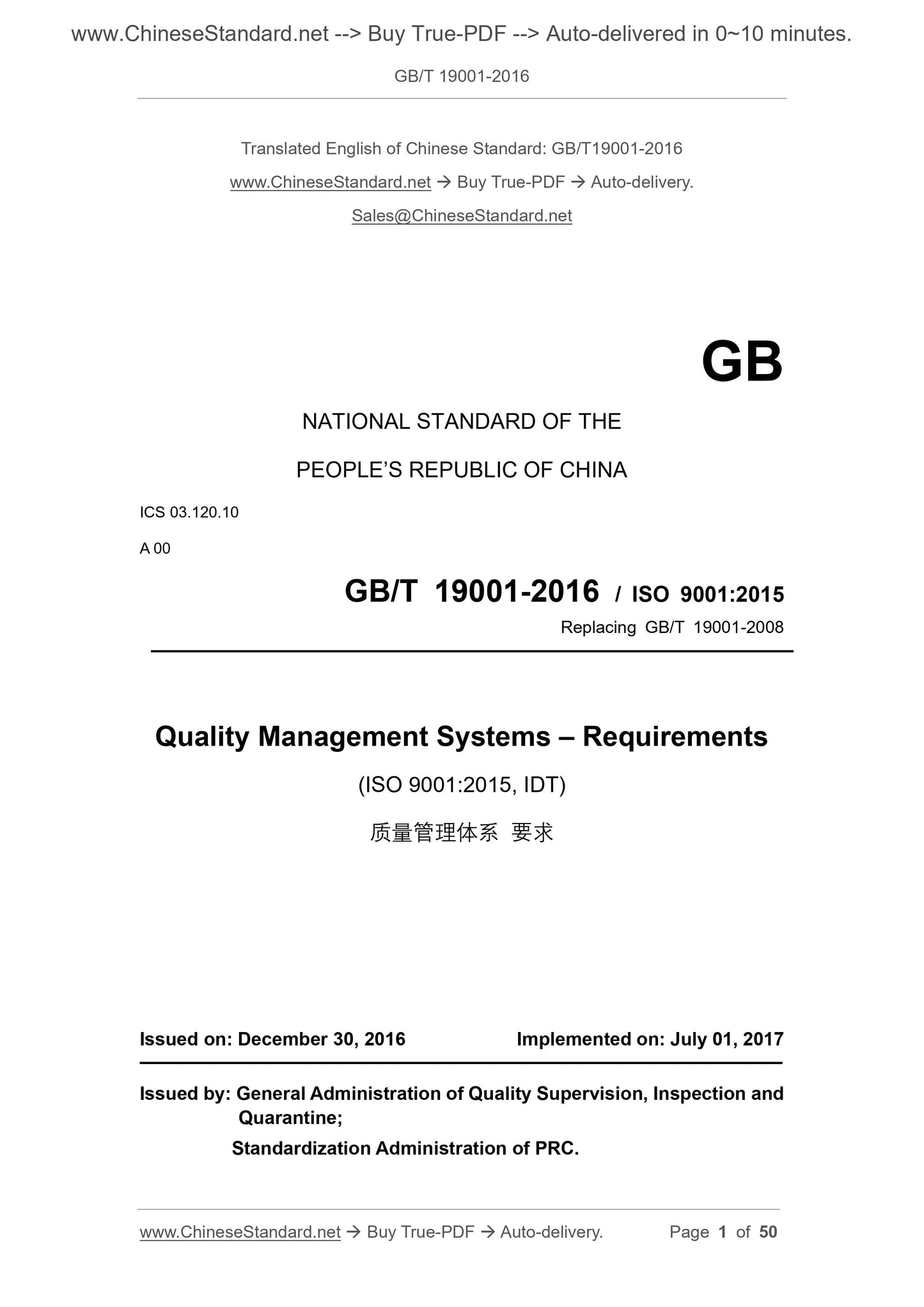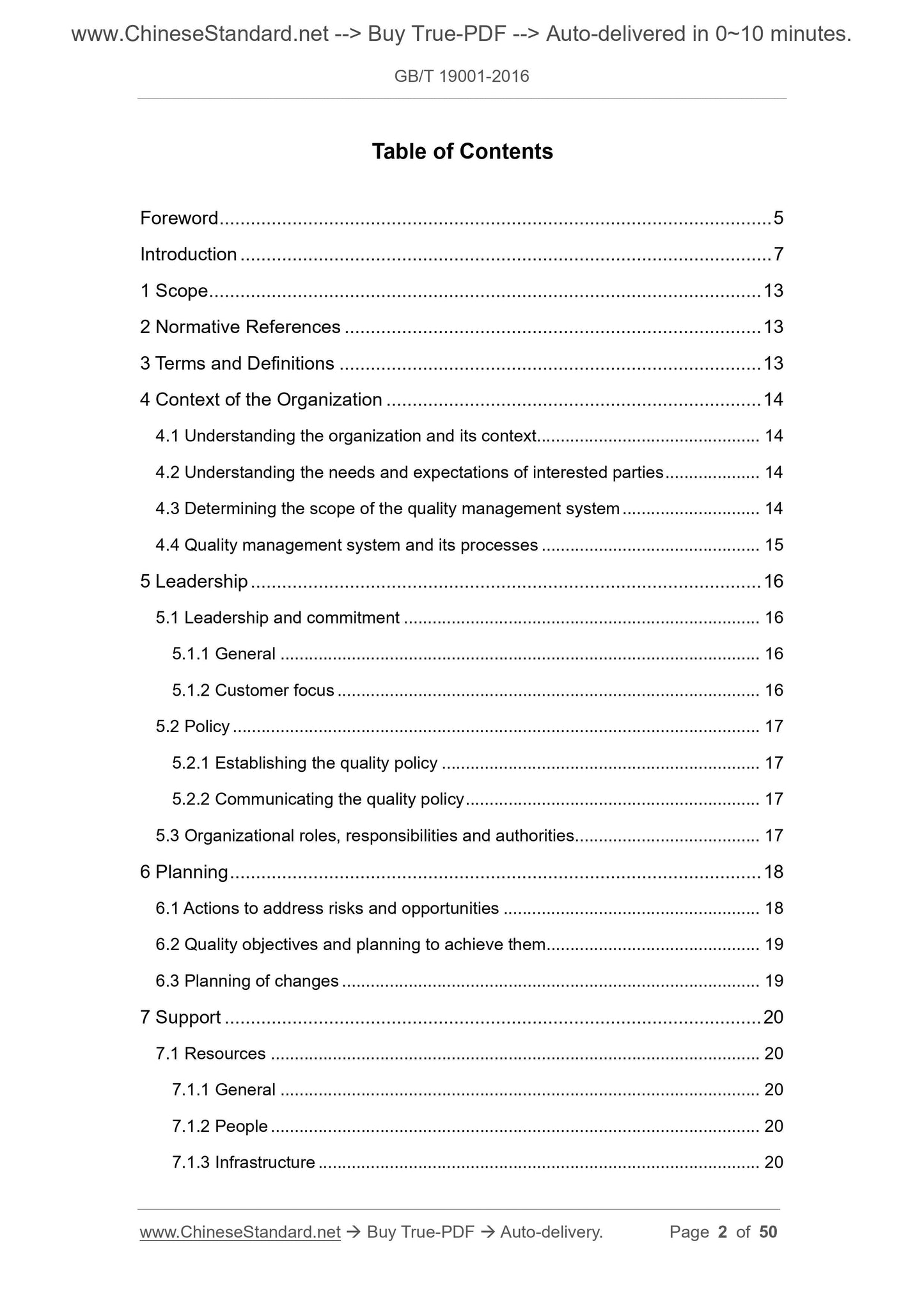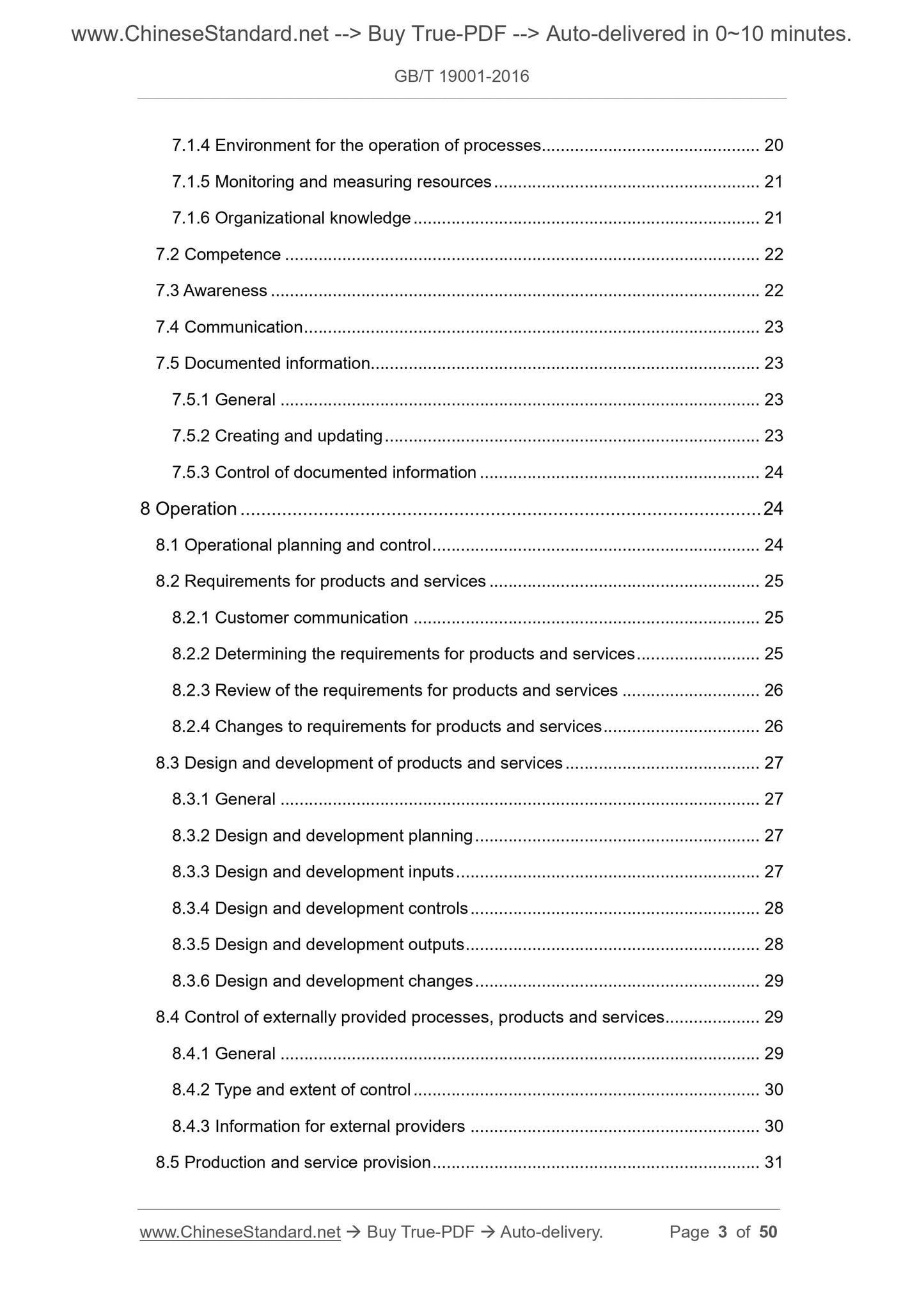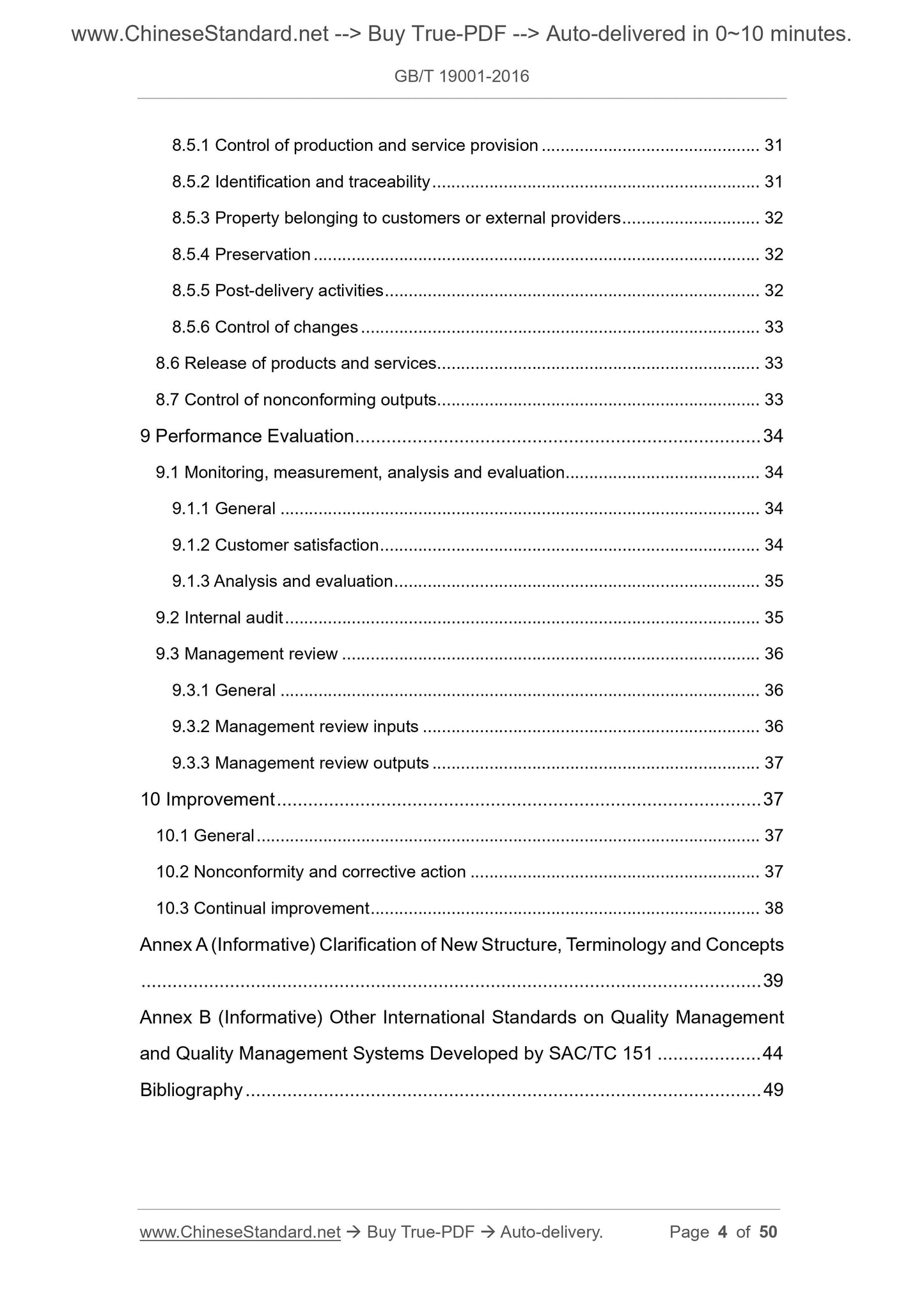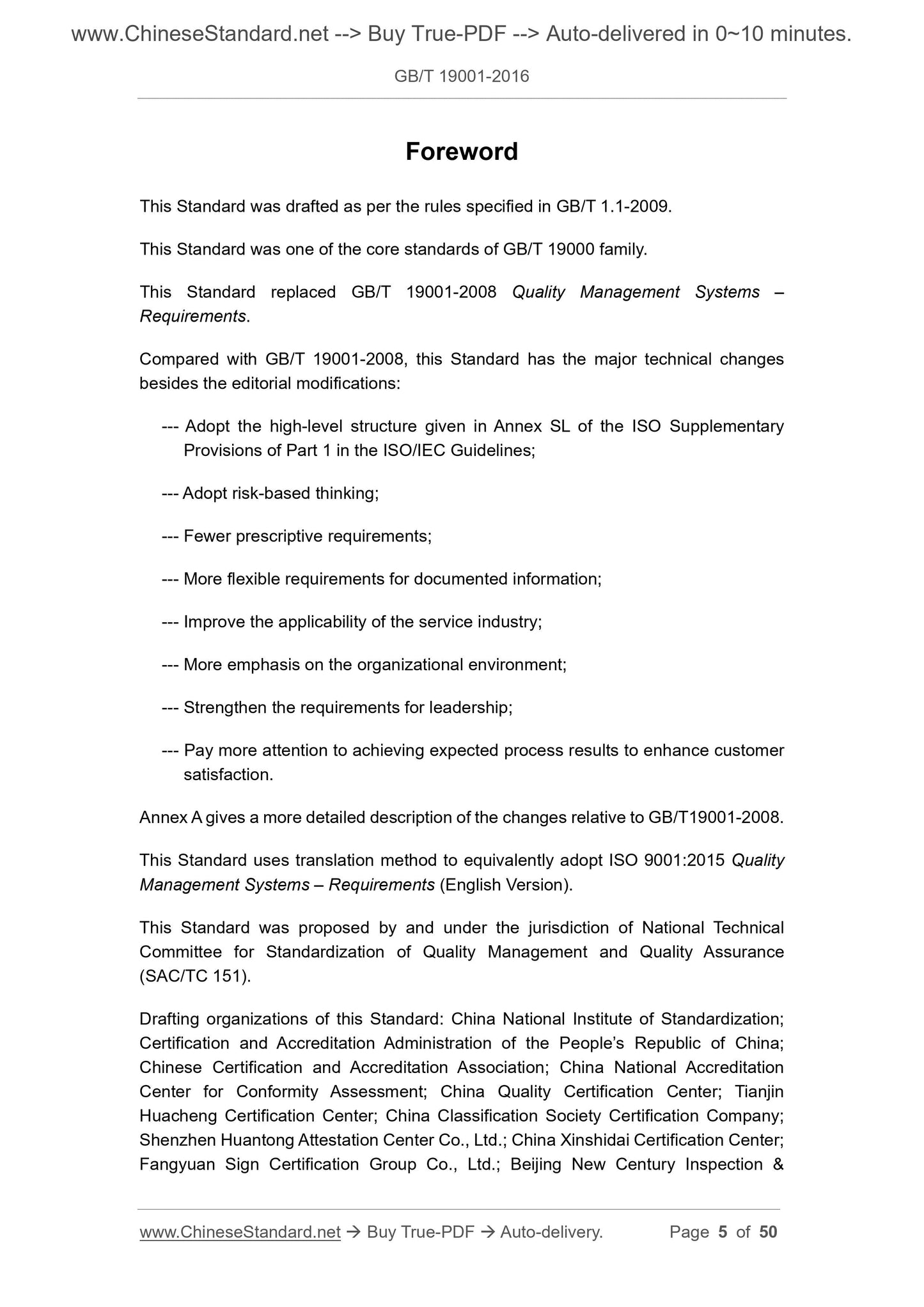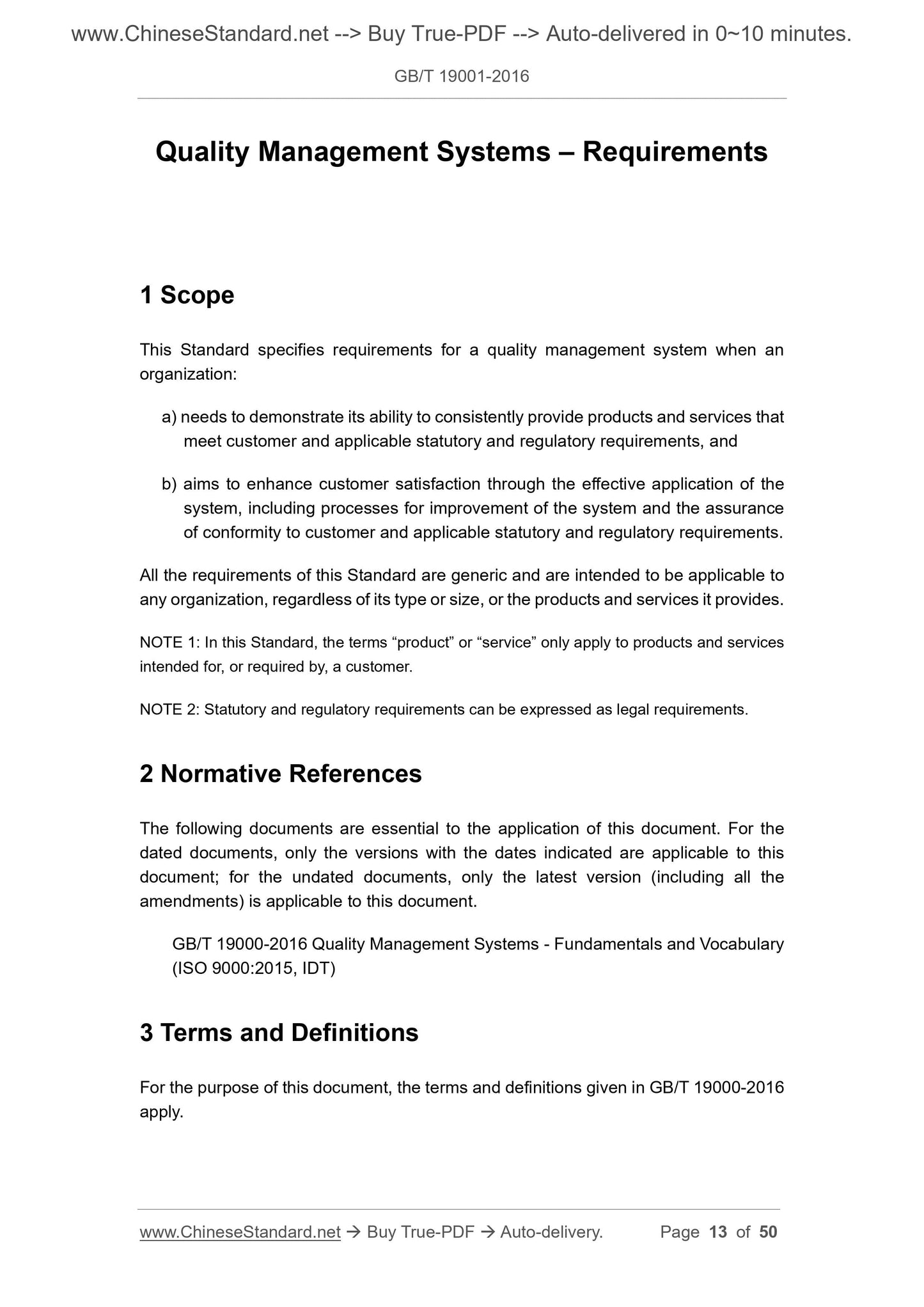1
/
of
6
www.ChineseStandard.us -- Field Test Asia Pte. Ltd.
GB/T 19001-2016 English PDF (GB/T19001-2016)
GB/T 19001-2016 English PDF (GB/T19001-2016)
Regular price
$425.00
Regular price
Sale price
$425.00
Unit price
/
per
Shipping calculated at checkout.
Couldn't load pickup availability
GB/T 19001-2016: Quality management systems -- Requirements
Delivery: 9 seconds. Download (and Email) true-PDF + Invoice.Get Quotation: Click GB/T 19001-2016 (Self-service in 1-minute)
Newer / historical versions: GB/T 19001-2016
Preview True-PDF
Scope
This Standard specifies requirements for a quality management system when anorganization.
Basic Data
| Standard ID | GB/T 19001-2016 (GB/T19001-2016) |
| Description (Translated English) | Quality management systems -- Requirements |
| Sector / Industry | National Standard (Recommended) |
| Classification of Chinese Standard | A00 |
| Classification of International Standard | 03.120.10 |
| Word Count Estimation | 30,369 |
| Date of Issue | 2016-12-30 |
| Date of Implementation | 2017-07-01 |
| Older Standard (superseded by this standard) | GB/T 19001-2008 |
| Regulation (derived from) | National Standard Notice No.27 of 2016 |
| Issuing agency(ies) | General Administration of Quality Supervision, Inspection and Quarantine of the People's Republic of China, Standardization Administration of the People's Republic of China |
Share
